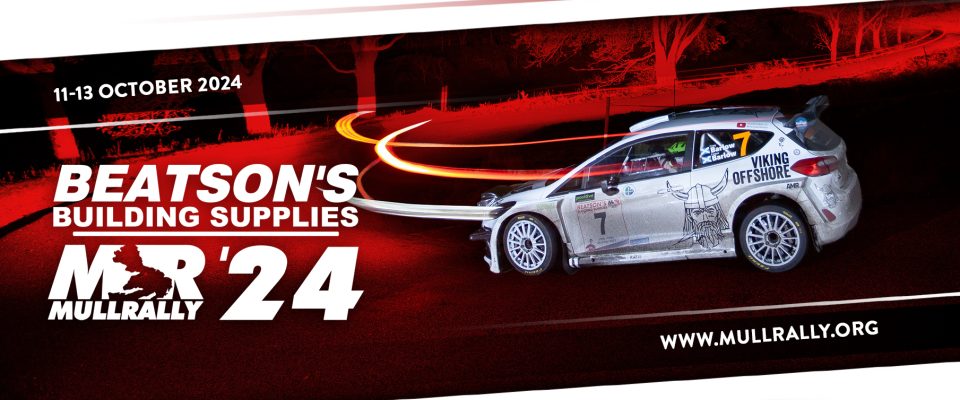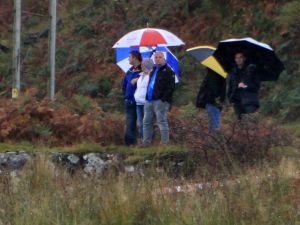Following the event we issued three online surveys to gain some feedback on the 2014 Tunnock’s Mull Rally. Thank you to everyone who kindly responded to these questionnaires. The spectator ones were quite short, whilst the competitor one requested more detailed feedback on certain sections of the event.
We thought you might like to see some of the results from each questionnaire:
Spectators:
53% travel to Mull by the Oban-Craignure sailing.
68% stay between three to five nights on the island.
70% spend between £200 to £700 whilst visiting the rally.
59% are a group of four, whilst 16% are in a group of over 10.
Over one third buy Tunnock’s products over 12 times a year.
70% stated that any purchasing decision would be influenced by a sponsor of the Mull Rally.
88% travelled over 200 miles to come and watch the rally, of that 36% travelled over 300 miles.
89% WILL visit Mull out with the rally to see the island at another time of the year.
Virtual Spectators:
52% followed the event through Facebook.
46% listened to the iRally live radio coverage.
56% watched the webcam footage of SS12.
94% felt that the build up to the rally kept them informed through Facebook, Twitter and the website. Comments being; it generated excitement, brilliant and informative.
77% stated that any purchasing decision would be influenced by a sponsor of the Mull Rally.
41% buy Tunnock’s products over 12 times a year
79% want to come and spectate in 2015.
94% were UK residents but there were followers from all round mainland Europe, Canada, Australia, New Zealand, Russia, Dubai and Nigeria as some examples.
Competitors:
One third were first time competitors to Mull Rally.
42% had competed on the event more than 7 times.
52% cross to the island by Lochaline.
70% use Self-Catering for accommodation during the rally.
79% stay for at least 5 nights or more.
Only 16% used the Rally2 Regulations to complete this tough event.
84% used the Mull Rally Facebook and/or Twitter accounts during the build up to the rally. Comments; one of the best for events that I’ve seen, Fantastic, up to date and informative, Very good coverage, top marks, Fantastic promotion of the event via social media.
33% came in a party of 10 people of more.
43% had a group of between 5 to 8 people.
63% spent between £700 to over £1500 during rally week. This does not include competing rally expenses.
36% travelled between 300-400 miles to compete on the rally.
61% of those who took part in Shakedown felt that it was of value.
95% used mullrally.org before the rally for information. Comment: great website, I think it is up there with world events in terms of content. Not so easy to navigate on tablets or smart phones.
59% visited the island before the event.
86% stated that any purchasing decision would be influenced by a sponsor of the Mull Rally.
38% buy Tunnock’s products over 12 times a year
Answers to common competitor responses:
We are really grateful for the comments we received back from the competitors with regard to the rally. Especially to those who said nice things about the organisation, route and marshals (blush). We wanted to take the opportunity to answer some of the common responses so that we could either explain why we do things this way, or look for more feedback for changes:
Ardtun: The common response was that it was a long way to go for not a lot of mileage; it is expensive for the competitor to go that far, with fuel costs etc. Why not run it twice or lengthen another stage to save going there?
The rally was known as the Tour of Mull and the Mull Rally Guardians get a lot of support throughout the year from the people from the Ross of Mull. Running in the daylight to the configuration we do it is not possible to run at 30 second starts and to merge the field into a second run through Ardtunas we have done in the dark. Whilst we did not investigate the Fountain Head stage fully it is unlikely that we would have been permission to close the main Fionnphort road for 5 hours during the day.
As for distance, the complete round trip to Ardtun from the Scridain stage is only 22.89 miles. Now that would be a comparatively short road section on just about any other rally. It is just that on Mull every other stage is VERY close to the next one.
Why did you end the Saturday afternoon in Salen and not in Dervaig?
As organisers we try to involve all areas of the island. Hence this year having starts in Tobermory and Craignure for a change and to have one of the Legs finish in Salen. Also it was felt that the congestion in Dervaig could have been an issue during the period when the stages were still live.
There was more road mileage this year than in 2013 that is not what we want.
Since the Clerk of the Course took on the role in 2012 he has been looking for new routes or permutations to keep the rally fresh. Hence some new layouts this year that had never been run before. In total there were only 8.73 more road miles this year than last.
Regroups
The regroups are necessary from an organisational point of view to close up gaps in the field from retirements or delays. By having these as regroups and not service time it keeps the sporting element fair for everyone. You could allocate a maximum of 50 minutes service time but a minimum of 30 minutes and what would most likely happen is that the top section of the field would get the maximum service time and those at the tail end the minimum. This keeps it fair.
On Friday night we did have to play around with these times as we had a 1hr 12 minute gap in the field following the crash of Stevie Brown. So for SS4 & SS5 we had to put additional course cars through to inform the spectators that the stage was about to restart, extend the regroup for the leading cars from 10 minutes to 20 and then service for them from 30 mins to an hour so that we could close the gap as much as possible. The remaining gap was then closed up at the stage start.
Why was the start/stop line of Gribun Rocks/Knock moved?
Following site visits by the MSA Observer and our 000 crew it was deemed that spectator access to the big jump was not as safe as it could be. Whilst there is access to close to this area through the fields there is no way past the big rock without walking on the stage. This was deemed unsafe and the decision was made to move the controls from here to allow safer access for spectators.
Why finish in Dervaig, Tobermory would be better.
60% of the competitors who responded felt that the atmosphere in Dervaig made it the right place for the finish of the rally. The thinking behind having the finish in Dervaig, right at the last Stop Line is that we already have spectators there, it captures the emotions as the crews finish the 23 mile stage and there may be some drama that happens in that test.
We appreciate that it does not necessarily work for competitors as there is nowhere to park where you can then stop for a blether with the other crews. This finish is very much for the spectator.
It is our thoughts that by moving it to Tobermory, for example there would be no atmosphere and no crowd. It would, though allow the competitors to congregate, to collect results and to catch up with each other, something to consider for the future.
In direct response to some individual questions:
Run a Trophy Rally
The main reasoning for not running the Trophy Rally and for introducing Rally2 is on the grounds of safety. The main field may take over an hour to pass a spectator location and the speed of the cars diminishes as the field goes by. You then have 10 minute break and for example, the next car through could be Calum Duffy. The increase in speed is enormous and it is a shock to the spectator who has become accustomed to the slower pace of the previous cars and whose viewing location may have moved.
By accommodating everyone in the main field it also keeps the length of the convoy more controlled for looking after the road opening times.
Get us a group deal from Caledonian MacBrayne
We would love to be able to get such an offer to the competitors. We started discussions with Caledonian MacBrayne back in March of this year. It was only the week before the rally that we got confirmation from them of the level of support that they were able to give us. As a public funded body it is difficult for CalMac to support events in the way that they may wish to and we are grateful for the sponsorship we did receive.
People spectating from our group couldn’t get access to an entry list.
The entry list was available for download from the website but was also in the event programme that was on sale around the island.
Could you run some daylight stages earlier on the Friday, have a halt and then start again later in the evening?
There is nothing in the Mull Rally Act that would prevent us from doing this but you do have to consider the island residents in the route planning. By closing off roads around 15.00 that road is then shut till 20.00 and we have to consider that people have to get home from work, boats etc. It is also likely that if we did try such a thing we would end up being tied up in knots with roads not being open for a long enough period to be able to shut them again.
Event paperwork: we need it further in advance, we need the road book in advance and we need to know what the chicanes are going to look like:
The route was one the website from 29th March 2014 as a Google Earth file, where Street View could be used to locate control exactly. There were also PDF maps of the full route available at that time. The Road Book is sent by e-mail to every competitor two weeks before the event showing all road sections and stages, including chicane diagrams and locations. The event regulations, issued in August also highlight the service locations and emergency service locations.

